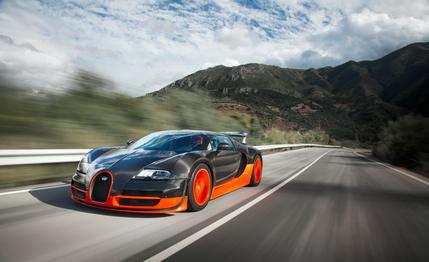
 First Drive Review
First Drive Review
Sun-sopped Andalusia, home to Picasso and the flamenco, is a solitary landscape of rolling cordovan-hued hills stitched by vineyards and olive orchards and best explored on the back of a donkey. At 204 mph, Andalusia sprays at you in a brown and green smear.
At 204 mph, even freshly rolled pavement, paid for with lavish European Union loans, feels perilously lumpy as the subtle mounds and sags that are invisible at sane speeds become terrifying whoop-de-dos. At 204 mph, if you look down to check your speedometer for just one second, you’ll miss the next 299 feet. Our cerebral cortexes flirt with signal overload at 204, but a Bugatti Veyron 16.4 Super Sport is just getting its wind up and will accelerate another 54 mph before tripping its electronic speed limiter. Drop-down oxygen masks and lighted placards over the emergency exits just might make this thing FAA certifiable.
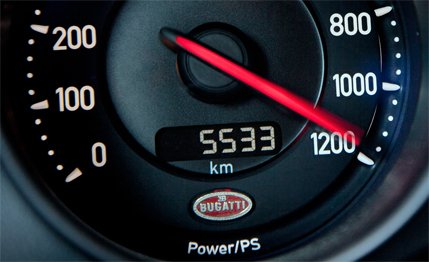

Apparently, it’s because the regular Veyron is such a pansy jellyfish of a car that Bugatti brings forth the Super Sport. The model will be the last word in Veyrons, representing the final 40 cars in a total production run of 300. Price: one hundred thousand trillion billion dollars, or it might as well be.
For the $2,426,904 a Super Sport costs (at the time of this printing), you could also buy 10 Ferrari 458 Italias and have $127,654 left over for lunch. In its quest to build the ultimate stroke job for the super-rich, the Molsheim operatives don’t seem very concerned with pragmatic constraints such as fiscal prudence or, indeed, the laws of physics.
For example, the Super Sport needed more than just another 20 horsepower to separate itself from the $1.7 million rental-fleet Veyron with its piddly 1001 ponies. Why not another thou? Bugatti probably considered it. But it was decreed that a 20 percent bump in output, to 1200 horsepower and 1106 pound-feet of torque is genug. Enough. So say the Germans who run Volkswagen’s crazy-bus subsidiary, and they don’t say that very often.
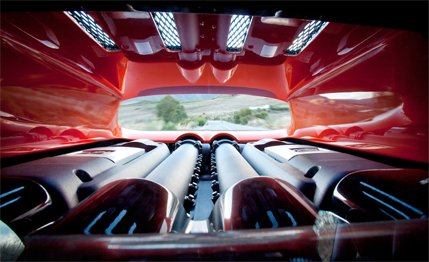

Consider these facts: Bugatti prices the Super Sport at 1.65 million euros and will charge the 10 to 12 expected American buyers based on the spot exchange rate. Thus, if the dollar softens by a mere cent against the euro, the car’s window sticker jumps more than $16,000.
Every U.S. Super Sport buyer also pays a 2.71 percent import duty, or about $62,000, plus a $51,000 delivery charge and $6400 in federal gas-guzzler tax. Adding an extra year to a regular Veyron’s two-year factory warranty costs about $70,000, though Super Sport buyers get it free.
A set of the Super Sport’s special Michelin tires costs $42,000 and may last 10,000 miles if you’re careful, though they last only 15 minutes at the car’s top speed (at that pace, however, the 26.4-gallon tank is sucked dry in just 10 minutes, and there’s no place on Earth to safely go that fast that long anyway, so no worries). At the third tire replacement, Michelin requires that you also swap out the $69,000 wheels—coincidentally, the only wheels that fit those tires—to ensure a proper bead seal.
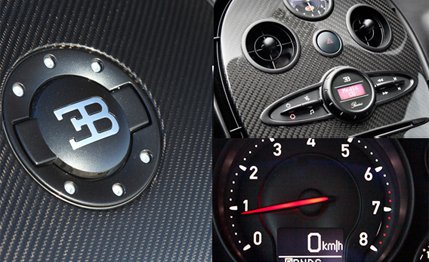

Personal touches are available, such as your own initials instead of Ettore Bugatti’s etched into the gas cap. One customer paid for illuminated doorsills with “words that can’t be repeated,” said a Bugatti staffer. If you want the Super Sport’s body finished in clear-coated carbon fiber instead of paint, add $428,180—just a bit more than the price of a new Rolls-Royce Phantom Coupé.
Let’s be blunt: This car is completely mental. At the Super Sport drive in the dusty hills near Jerez de la Frontera, even its chief engineer, Wolfgang Schreiber, admitted that it’s easier to find an honest hedge fund-manager than places to use 1001 horsepower, let alone 1200.
“Most of our customers drive very normal. Actually, slow,” said Schreiber. “So we needed changes you could see and feel at any speed.”
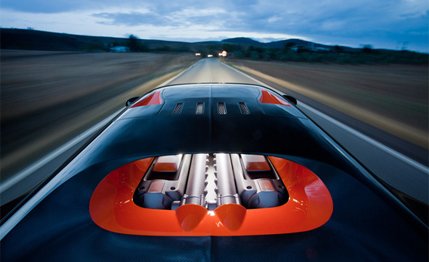

Since 2005, Bugatti has put 243 Veyrons into customer hands, enough to constitute a focus group of sorts. According to Schreiber, the buyers say they would like a skosh more edge to the car’s handling. We feel their pain. Every Veyron we’ve encountered has accelerated like a line drive off the cricket bat of Shiva but has steered no better than your average Lexus. Perhaps that’s why that guy in Texas made Youtube history by driving his into a lagoon. Either that or he is just an idiot.
Whatever. Bugatti says the Super Sport embodies everything it has learned about the Veyron and its customers over five years. No, it doesn’t come with an inflatable dinghy, but the revised shock tuning and stiffer sway bars do help to elevate the driver’s connection and involvement. The nose dives for turns with far more enthusiasm, and body motion is better controlled, giving the pilot a clearer sense of where the threshold lies between acing a fast corner and flying off into low orbit.
That’s rather vital in a hypercar that can easily triple its speed between mailboxes. So are brakes, and the Super Sport’s carbon-composite discs (15.7 inches in front) are literally breathtaking. Should a truck suddenly turn into your lane, you can drag down the Bug from 140 mph to, say, 53.7 with astonishing alacrity and enough foot control to leave a gap twice the width of your front license plate should you desire to cause cardiac dysrhythmia in your passenger.
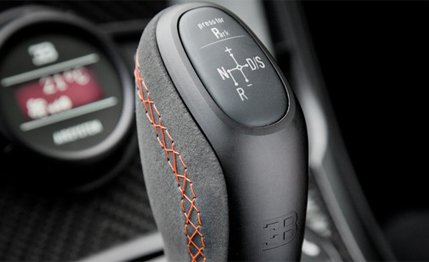

To get the Super Sport to its 268-mph production-car land speed world record (real production Super Sports are limited to a tire-saving 258 mph), Bugatti did a little smoothing of the Veyron’s Humpty Dumpty shape. Most noticeably, the polished aluminum bazookas on the regular Veyron’s back that sluice air to the engine are gone. In their place is a sort of carbon-fiber turtle shell that forms a tunnel through which the driver sees what he just left far behind and which is cut with flush-fitting twin NACA ducts.
If you want to show off the engine, it takes two trained technicians about 30 minutes to remove the couple-dozen fasteners holding down the shell. Nevertheless, Schreiber says the ducts increase power by creating a greater ram-air effect than the bazookas while also offering reduced drag.
Further, Bugatti opened up the front radiator nostrils, added a pair of slots under the headlights that feed wind directly to the front brakes, and reshaped the front splitter and rear diffuser for increased downforce. With the reprogrammed rear wing deployed, the body generates 882 pounds of downforce at its top speed. At 204 mph, we can report that it feels slot-car stable.
The extra output—199 horsepower and 184 pound-feet of torque—comes via four turbos that are 10 percent larger and bolted to the otherwise unchanged 16-cylinder warp drive in back. A less restrictive exhaust contributes as well. Fuel pressure is turned up, and an extra pair of in-tank fuel pumps—there are two in the base car, four in the Super Sport—do the juicing. The seven-speed, dual-clutch automated manual drives beefier prop shafts through a reinforced second and third gear and a taller seventh gear, which makes for a claimed 10 percent highway-mileage bump.
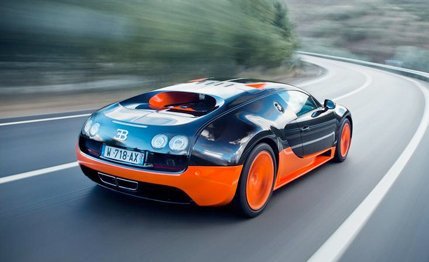

With its carbon-fiber outer panels, the Super Sport is 110 pounds lighter than the base, aluminum-bodied Veyron. A new, stiffer carbon-fiber weave is employed in the tub and saves 55 pounds alone. Bugatti also relocates the rear-differential cooler from the passenger-side gill to the rear diffuser, which reduces plumbing hardware, and unique wheels shave a net 25 pounds.
The Super Sport is still much too big and way too heavy to feel like a second skin. With its high sills and dash, it feels more like a really fast Jacuzzi. It’s loud inside—and not the delicious kind of loud you get in a Ferrari. The tires moan oppressively at any speed, and the engine’s voice is mostly a white noise of whirring and whooshing.
It exists mainly as an objet d’art for its owner and a one-car circus parade for the fawning public. It is perhaps the apogee of internal-combustion performance, the final word before the dawning dictatorship of electric pods. It is a Bugatti.